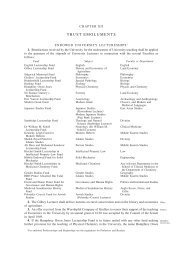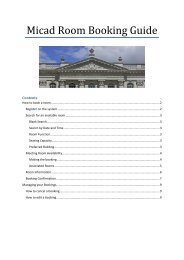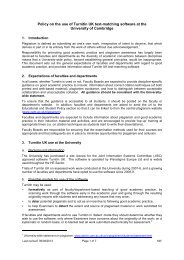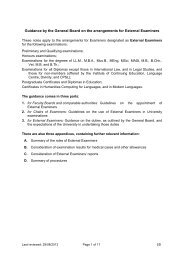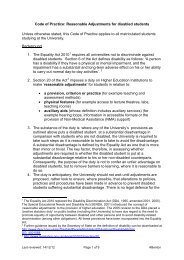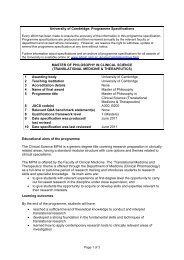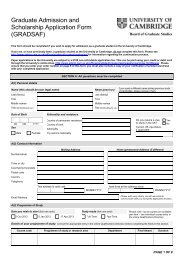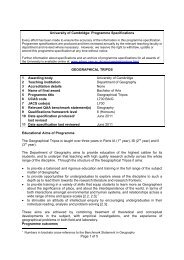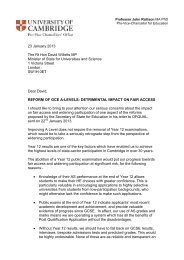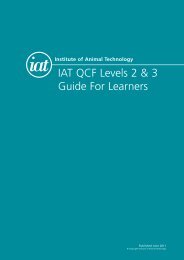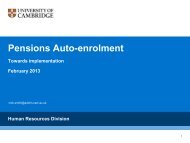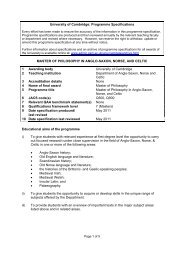Guidelines on Marking Standards and Classing Conventions
Guidelines on Marking Standards and Classing Conventions
Guidelines on Marking Standards and Classing Conventions
Create successful ePaper yourself
Turn your PDF publications into a flip-book with our unique Google optimized e-Paper software.
differentiati<strong>on</strong> of c<strong>and</strong>idates when it comes to determining overall performance in the<br />
examinati<strong>on</strong>.<br />
It might be helpful to c<strong>on</strong>sider criteria based <strong>on</strong>:<br />
• how well c<strong>and</strong>idates have addressed the questi<strong>on</strong>/topic;<br />
• the quality of the argument;<br />
• the range of knowledge/underst<strong>and</strong>ing displayed;<br />
• <strong>and</strong> how expectati<strong>on</strong>s change as students progress through undergraduate <strong>and</strong> masters<br />
levels .<br />
<strong>Marking</strong> of individual pieces of work will reply <strong>on</strong> the academic judgement of individual<br />
markers. However, clear guidelines should ensure that marks allocated are fair.<br />
Other informati<strong>on</strong> that should be included is:<br />
• the form of a mark – is it numeric, alphabetic, in the form of a class or some other<br />
system?<br />
• systems employed to validate marks of individual markers – are answers double<br />
marked? A sample, in all cases, at borderlines? Are statistical methods used to review<br />
mark profiles for each questi<strong>on</strong> or each marker?<br />
• how an agreed mark is determined for questi<strong>on</strong>s that have been double marked, where<br />
the discrepancy is small, <strong>and</strong> where the discrepancy is large.<br />
• any penalties to be applied for late submissi<strong>on</strong>.<br />
• any penalties to be applied for failing to comply with the rubric.<br />
<strong>Classing</strong> c<strong>on</strong>venti<strong>on</strong>s<br />
Boards of Examiners are expected to exercise academic judgement in determining the final<br />
classes of c<strong>and</strong>idates. External Examiners have an important role to play in this. However, to<br />
ensure c<strong>on</strong>tinuity between years <strong>and</strong> fair treatment of all c<strong>and</strong>idates, Faculty Boards <strong>and</strong><br />
Degree Committees should set out clearly classing c<strong>on</strong>venti<strong>on</strong>s for both examiners <strong>and</strong><br />
students. In drawing up <strong>and</strong> reviewing classing schemes, some of the following might be<br />
included:<br />
1. How marks for different papers of the examinati<strong>on</strong> are combined, including any<br />
weighting given to particular elements of the examinati<strong>on</strong>.<br />
2. How preliminary class boundaries are determined. This is likely to be based <strong>on</strong> a simple<br />
approach applying the class boundaries used for marking individual essays (in most<br />
cases in Tripos 70% for a First, 60 – 69% Upper Sec<strong>on</strong>d, 50 – 59% Lower Sec<strong>on</strong>d, 40 –<br />
49% Third Class, <strong>and</strong> for MPhils the comm<strong>on</strong> marking scheme required by the General<br />
Board where the pass mark is 60% <strong>and</strong> the threshold for a distincti<strong>on</strong> is 75%).<br />
3. How final boundaries are determined. This is likely to include a comparis<strong>on</strong> of<br />
preliminary distributi<strong>on</strong>s with expected percentages based <strong>on</strong> previous results. It will also<br />
involve a detailed review of mark profiles, <strong>and</strong> comparis<strong>on</strong> of marks, of c<strong>and</strong>idates at the<br />
boundaries.<br />
Informati<strong>on</strong> <strong>on</strong> the following might also be included:<br />
• Whether scaling or moderati<strong>on</strong> of marks is permitted (or required) <strong>and</strong>, if so, how<br />
appropriate algorithms are determined.<br />
• Whether marks are rounded <strong>and</strong> how this rounding is performed.<br />
• How marks for borrowed papers are h<strong>and</strong>led, including any mapping or translati<strong>on</strong> of<br />
marks agreed <strong>on</strong> the basis of a comparis<strong>on</strong> of marking schemes.<br />
Last reviewed: 26/08/11 Page 2 of 3 AB



